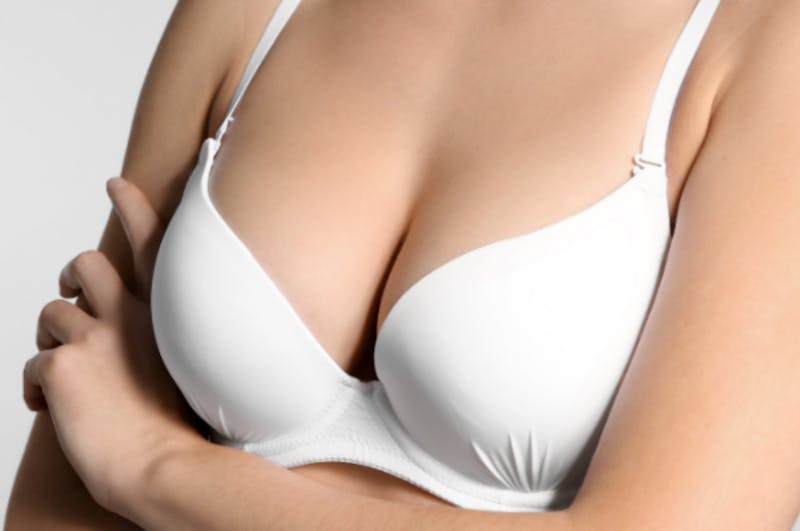
Reaching your goal weight can be a rewarding experience, but one that can change the overall appearance of your body. While you may be happy with a slimmer physique, women often feel unsatisfied with the size and shape of their breasts post-weight loss.
It can be discouraging to work hard to improve the appearance of your body and – as a result – encounter another barrier to your self-esteem. Breast augmentation surgery can help restore the post-weight loss appearance of your breasts and help you reach your goals.
No form of plastic surgery is for everyone, however, and breast augmentation is expensive and comes with a lengthy recovery period. Before you undergo surgery, take some time to make sure the procedure is right for you. Below, we will break down what to expect to help you make an informed decision.
How Weight Loss Can Affect Breast Size
In some cases, it can. Everyone’s body is different, so no two people will have the same experience when losing weight. For some women, weight loss – especially significant weight loss – can have a substantial impact on the appearance of their breasts.
While cup size may not change significantly due to weight loss, it can change the appearance of the breasts dramatically. For some women, this can be a positive experience. A slimmer, more toned form overall may make your breasts look bigger.
Unfortunately, not every woman has this experience. People tend to lose fat in different parts of the body, so some women experience more significant fat loss in the breasts than others. Weight loss – especially fast weight loss – can also leave the breasts looking saggier.
Breast augmentation is not the only way to address these problems. Weight training – upper body work especially – can improve the appearance of your breasts by enhancing your pectoral muscles. However, no type of physical exercise will dramatically alter your cup size.
Even improving underlying chest muscles often does leave you with your desired results. In these cases, breast augmentation can be highly beneficial to self-esteem and self-image.
Types Of Augmentation
There are two main types of breast augmentation: breast implants and fat grafting.
Implants are silicone- or saline-filled shells that are inserted between the natural breast tissue and pectoralis muscles or under the pectoralis muscle. If you opt for silicone implants, you can often get implants shaped in a specific way.
Fat grafting involves removing fat from other areas of the body via liposuction, purifying it, and then using it to reshape and fill out the breasts.
Both fat grafting and breast implants are performed under general anesthesia. You generally need a medical evaluation beforehand to ensure you are healthy enough to safely undergo surgery.
You can also opt for a breast lift instead of augmentation. During a breast lift, your surgeon removes excess skin and tightens the surrounding tissue. This can correct issues like drooping and comes with a similar recovery time to augmentation.
Implants Vs. Fat Grafting: Which Is Right For Me?
That really depends on your goals. Both procedures come with their own set of pros and cons.
If you want more extreme changes, you will likely benefit from breast implants more than fat grafting. Implants allow you much more control over the final size and shape of your breasts. They also yield more dramatic results overall, making them a good option for those looking for more significant changes to their body.
However, implants come with a longer recovery time and a slightly higher risk for complications. Some women also feel implants feel unnatural.
Fat transfer uses fat harvested from your own body, leaving your breasts feeling more natural. It can also be effective for those who only want minor changes post-weight loss to restore a smaller amount of lost volume.
Oftentimes, stubborn fat congregates on certain areas of your body – often areas like the stomach and thighs – even after weight loss. This is often due to genetic factors. Fat grafting can be an opportunity to both correct this issue and improve the size and shape of your breasts.
The major downside to fat grafting is that it can be a bit less predictable in terms of final results. Fat can often be difficult to shape, so your surgeon may not be able to customize size and shape as much as they could with implants.
Breast Augmentation After Weight Loss: The Bottom Line
Reaching your weight loss goal and still being unhappy with your body can be demoralizing. Breast augmentation can correct breast sagging and restore lost volume to get you the figure you want.
Breast augmentation is not always necessary. Often, weight training can help in a minor way to improve the appearance of your breasts. However, if you have exhausted your options and are still not getting results, cosmetic surgery can help you overcome plateaus. Breast augmentation can have a positive impact on your self-esteem and self-image, leaving you feeling satisfied with your physique.
Looking for a surgeon? Leif Rogers is an Ivy League-educated, board-certified plastic surgeon and a standing member of the American Society of Plastic Surgeons. If you’re considering breast implants, get in touch here to schedule a consultation.


